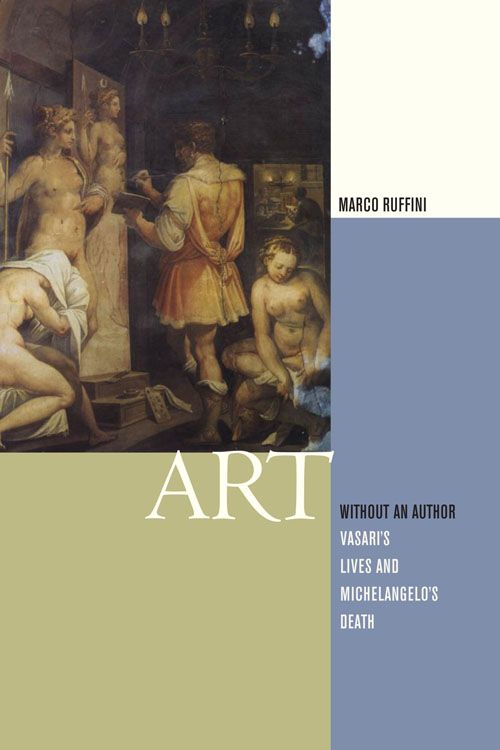Save 25% plus free shipping during our Winter Sale! Use promo code JOY2025. Expires 1/5/26.
Art Without an Author
Vasari's Lives and Michelangelo's Death

This book can be opened with

Why is the history of art so often construed as a history of artists, when its alleged focus is art? This book responds to this question by examining Giorgio Vasari’s Lives and the artist it features most centrally, Michelangelo.
Printed in Florence in 1550 and republished in a substantially enlarged form in 1568, the Lives is a compendium of biographies of the most noteworthy artists, from the late Middle Ages to Vasari’s time. Perhaps no other text has exerted such a formidable influence on the discipline of art history, shaping its historical and conceptual categories—principally as an effect of its biographical format and the biological model it follows, charting artistic development from birth through decline.
More than any other artist in the Lives, Michelangelo exemplifies art as an expression of the individual. Yet at the same time, as this book aims to show, the Lives fashions Michelangelo as the founder of a new academic era in which art develops collectively as a discipline. Paradoxically, Vasari’s celebration of Michelangelo mobilizes a conception of art as teachable and transmissible that is antithetical to Michelangelo’s aesthetic ideals and unique style.
Each of the five chapters of this book examines the notion of “art without an author,” whereby art is teachable and not the inimitable product of a genius, or a corporate rather than an individualistic venture. By tracing Vasari’s transformation of Michelangelo from an artist into a figure who legitimates a new age in art, the book bridges a longstanding dichotomy in our understanding not only of Vasari but also of Renaissance culture and art.
The claims Art Without an Author makes are integrally supported by art historical research and textual/philological analysis. By way of close study, this book reaches entirely new conclusions about Michelangelo, the production and significance of Vasari’s Lives, and the role “authorial” values play in Italian Renaissance culture.
A concise and highly readable volume that considers an enormously important constellation of matters within Italian culture of the late Renaissance, touching on a broad range of matters artistic, literary, and social.——Leonard Barkan, Princeton University
Art Without an Author presents a revisionist view of the Lives, but one grounded firmly in contemporary artistic, literary, and social culture. . . It enriches our understanding of the production and significance of Vasari's Lives.——Renaissance Quarterly
“Ruffini lays the groundwork for better understanding the background for confusion behind claims to authorship in our own Post-Enlightenment age. He also makes it possible for us to accommodate into the humanities the sort of corporate authorship and publishing collaborations that were common in the sixteenth century, but are only practiced routinely today in the sciences. He does this through an elegant, scholarly, and even gripping discussion of the academic project of producing Vasari’s Lives, and the functions that Michelangelo’s art and persona have performed in art and literary history.”——Evelyn Lincoln, Brown University
. . . A readable, succinct account of current thinking about Vasari's place in the transition to an academic culture of art criticism. . . Recommended.——Choice

